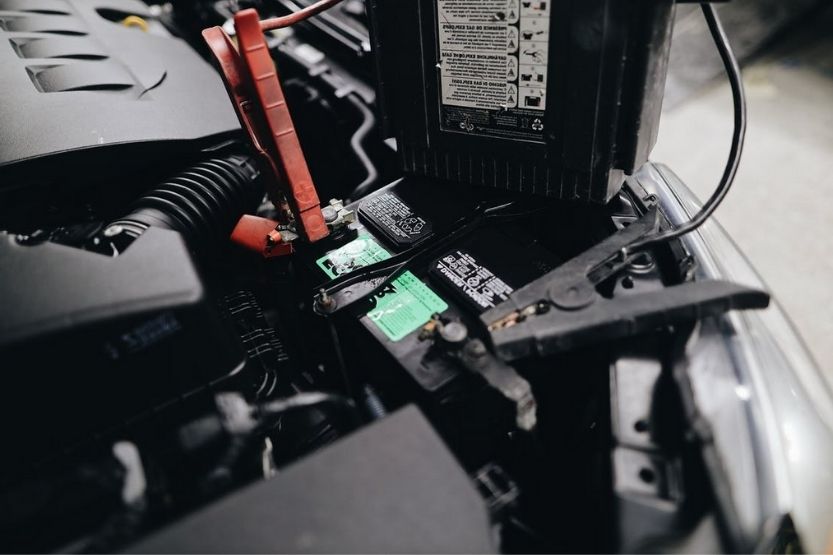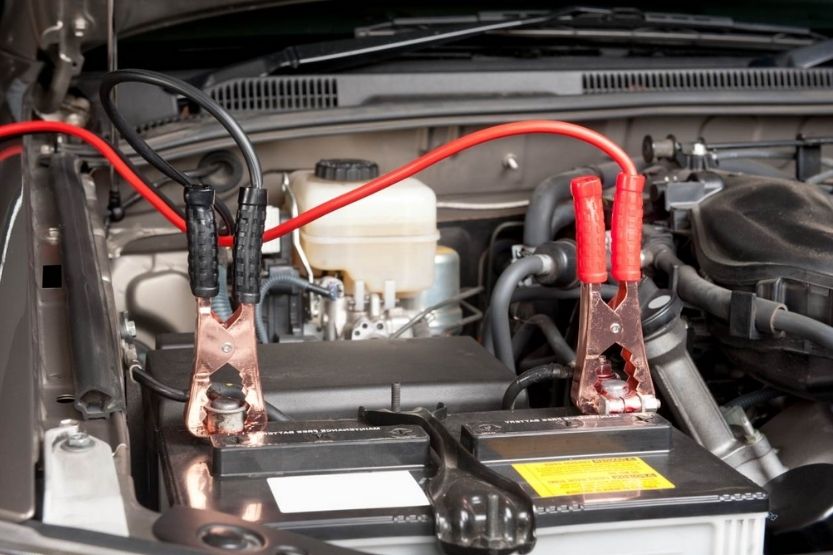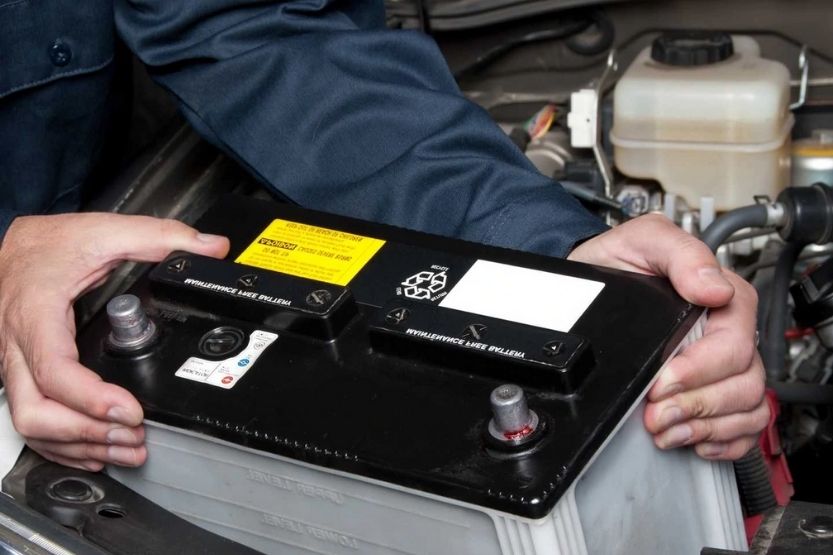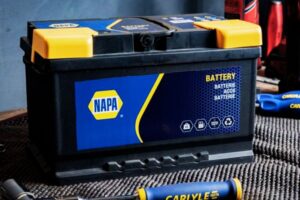A common issue many car owners have is their car’s battery won’t hold a charge. To fix this issue, you can recondition the battery. So how to recondition a car battery that won’t hold a charge?
To recondition a car battery, you need to apply a cleaning solution to it. This cleaning solution will serve as both a battery cleaner and an acid spill cover-up.
The 9 steps for applying this cleaning solution and reconditioning a car battery that won’t hold a charge are as follows:
- Wear Protective Gear
- Prepare the Cleaning Solution
- Clean the Battery
- Verify the Voltage
- Empty the Battery Cells
- Clean the Battery Cells
- Replace the Battery Cell Solution
- Recharge the Battery
- Test the Battery
Read on to learn more about the steps on how to recondition a car battery that won’t hold a charge.
How to Recondition a Car Battery That Won’t Hold a Charge

It is possible to recondition a car battery that won’t hold a charge so you can make it work again. But, first, you need to apply a cleaning solution that will serve as both a battery cleaner and an acid spill cover-up. To apply this, there are certain steps you need to take.
We will discuss the steps later. But, first, let me explain what battery reconditioning means.
What Is Battery Reconditioning?
Sulfation occurs when energy is supplied to a vehicle or any other device. This is also termed a battery discharge process.
The chemical reaction results in a build-up of sulfate crystals on the battery plates. There is a longer charging time if there is a high crystal build-up. The battery becomes less efficient, too, and there is a lower charge capacity.
When you refurbish or recondition your car battery, the sulfates are cleaned off. In addition, the electrolyte solution is also replenished. These occurrences then enable the battery to recharge and function well again.
Materials Needed for Reconditioning
The things you need to be able to recondition a car battery at home include the following:
- Protective wear such as chemical-resistant gloves, safety goggles, and apron
- Two large buckets
- Funnel
- Flathead screwdriver
- Steel wool or battery terminal cleaner
- Toothbrush
You also need the following ingredients:
- 1 pound of Epsom salt
- 1 pound of baking soda
- 1 gallon of distilled water
Specialty items are also needed, such as the following:
- Voltmeter
- Battery charger
How to Fix Battery Light on Dashboard
9 Steps for Reconditioning a Battery That Won’t Hold a Charge

Once you have prepared the materials needed, you can start reconditioning your car battery.
It is, however, important to note that the instructions I will provide you are specific to lead-acid batteries. Also, you can recondition your battery even if it still has not shown any issue. You don’t have to wait for the battery to deplete before you try reconditioning it.
And before you start the reconditioning process, check the battery thoroughly. Make sure that there are no broken pieces, bulges, or cracks. Ensure that it is in good physical shape. Otherwise, it might be a better idea to replace your battery:
1. Wear Protective Gear
Reconditioning a car battery could get messy. So, it is best to wear protective gear before you even start the process. Among the most important ones are a pair of chemical-resistant gloves, safety goggles, and an apron.
It is also advisable to work in a well-ventilated space.
2. Prepare the Cleaning Solution
Prepare the cleaning solution that you will use. Mix baking soda and water using the 2:1 ratio. This is expected to create a runny paste.
This cleaning solution will not only serve as your battery cleaner. It will also serve as an acid spill cover-up.
3. Clean the Battery
Check if the battery terminals are corroded. If they are, apply an adequate amount of cleaning paste. But if you have a dedicated battery cleaning product at home, you may use this instead.
Apply the cleaning solution to the posts. Then, gently but thoroughly scrub the build-up off using a toothbrush. If you notice that there is a foaming reaction, then it means that your solution is working. If the battery is heavily corroded, use steel wool instead.
Always bear in mind to completely clean, wipe, and dry off the battery terminals.
4. Verify the Voltage
Once you have cleaned the car battery, you must verify the voltage by connecting the voltmeter. Make sure to connect the positive terminal to the red cable. Then, connect the negative terminal to the black cable. It is basically like jumpstarting a car.
A standard car battery features six battery cells. Each of these cells can produce roughly 2.1 volts and, therefore, a battery in great condition should have 12.6 volts.
If, according to the voltmeter, the battery still has at least 10 volts, you can still recondition it. But if the voltmeter indicates that the battery has less than 10 volts, it already needs a replacement. Reconditioning the battery won’t work anymore.
5. Empty the Battery Cells
To start emptying the battery cells, you need to prepare a half-pound of baking soda and a bucket with you. Set this aside.
Take the battery cover off of your car battery. Use a flathead screwdriver to detach all the cell caps. Carefully empty the contents of the cell into the bucket. Make sure to do this process for each battery cell.
You can add baking soda into the bucket while emptying the battery cells or right after emptying them. This helps in neutralizing the battery acid so you can safely dispose of it.
6. Clean the Battery Cells
Clean the battery cells by pouring the cleaning solution into each of the cells. Use a funnel to prevent the solution from spilling. Then put back the cell caps and battery cover.
Shake the car battery for roughly a minute to thoroughly clean the battery cells. Then, remove the cell caps and battery cover to dispose of the cleaning solution into the bucket.
7. Replace the Battery Cell Solution
In a container, mix 4 ounces of Epsom salt with 4 cups of water. Stir continuously until the water becomes clear. You can do this by using boiling water, but this is only an option. Whether you use boiling water or not, the result will be the same.
This mixture is now your new electrolyte solution. Use the funnel to pour an adequate amount of the solution into each battery cell. Make sure to refill each cell. Then put back the cell caps and battery cover. Finally, shake the battery to distribute the salt evenly.
8. Recharge the Battery
When recharging the battery, you have to perform the process carefully. Also, make sure that you are in a safe and secure area.
Take extra precautions when recharging a battery. One of which is to remove the battery caps once again. This is important as the electrolyte solution tends to overflow due to the heat caused by charging.
Make sure that the charger is placed as far as possible from the battery. Connect it at a speed of 12 volts per 2 amperes. Allow the battery to recharge for roughly 36 hours.
9. Test the Battery
Disconnect the charger after recharging the battery for 36 hours. This time, connect the voltmeter to check the status of the battery.
Normal readings should be approximately 12.42 volts. If the reading is lower, you may charge the battery again for roughly 12 hours. Once done, you can perform a load test this time.
Reinstall the battery and turn the car ignition to its “On” position. Turn the high beams on too. Leave it for a few minutes.
While it is still under load, test the battery once again. The voltmeter should read at least 9.6 volts. This means that you succeeded in reconditioning your car battery.
The lifespan of a reconditioned battery depends on its age as well as its existing capacity. Generally, you can repeatedly recondition your battery several times. This means that it is possible to prolong the life of your battery beyond the typical five-year lifespan.
Again, how to recondition a car battery that won’t hold a charge? To recondition a car battery, you need to apply a cleaning solution to it. This cleaning solution will serve as both a battery cleaner and an acid spill cover-up.
Why Won’t My Car Battery Hold a Charge?

Not everyone knows how to jumpstart a vehicle. Knowing how to do it is indeed a great skill to have. But, sadly, jumpstarting a vehicle is not always the solution.
If a car fails to start, it is always assumed that there is a problem with the battery. So, the initial reaction is to pull out the jumper cables and then jumpstart them. But what does it mean if the same issue repeatedly occurs every time you get in the car?
This only means that your vehicle battery fails to hold a charge.
Reasons Why a Battery Won’t Hold a Charge
There are several reasons why your car battery won’t hold a charge. These include the following:
- The battery is old and needs replacement
- Parasitic electrical drain on the battery due to bad alternator
- Mechanical charging problem
- Lights and other accessories were left on, resulting in a drained battery
Diagnosing the Issue of Why a Battery Won’t Hold a Charge
There are several reasons why a car battery won’t charge, and you can’t just guess what the exact reason is. Instead, you can conduct various tests to confirm the issue. Among these are the following:
- Turn on the Headlights
- Test Battery Voltage
- Check the Physical Condition of the Battery
- Examine the Alternator
Let’s briefly discuss them:
1. Turn on the Headlights
The first test is to turn on your car’s headlights. If the brightness is normal, then the problem is not the battery. Instead, there must be some issue with the starter, or there’s poor wiring.
On the contrary, if your headlights are dimmer than usual, then the issue is most likely the battery.
2. Test Battery Voltage
Another test is to determine the voltage of your car battery using a voltmeter. Again, connect the positive terminal to the red lead and connect the negative terminal to the black lead.
If the reading indicates 12.6 volts, then you have a fully charged battery. Otherwise, your battery charges poorly. Most likely, there is some issue concerning your battery.
3. Check the Physical Condition of the Battery
Take a look at the physical condition of your car battery too. Look for signs of damage. Is it worn out? Are there broken pieces, bulges, or cracks? Because if there are, it means that you need to replace your battery. Don’t bother to recondition it anymore.
4. Examine the Alternator
The issue can also be related to the alternator. Again, you can confirm this if you detect some cracking or fraying linked to the alternator cables.
Try to jumpstart the car. If it jumpstarts successfully, but the battery loses its charge quickly, then the issue is most likely the alternator.
Conclusion – How to Recondition a Car Battery That Won’t Hold a Charge
It is possible to recondition a car battery that won’t hold a charge so you can make it work again. But, first, you need to apply a cleaning solution that will serve as both a battery cleaner and an acid spill cover-up. To apply this, there are certain steps you need to take.
The step-by-step instructions for reconditioning your battery are as follows:
- Wear Protective Gear
- Prepare the Cleaning Solution
- Clean the Battery
- Verify the Voltage
- Empty the Battery Cells
- Clean the Battery Cells
- Replace the Battery Cell Solution
- Recharge the Battery
- Test the Battery
You can recondition a car battery on your own, and you can even do this at home. Just make sure that you have enough knowledge on how you should do it.
However, it is still always best to get professional assistance, especially if you are hesitant to check it on your own. Get an expert opinion by bringing your vehicle to the car care center nearest you. Let a professional mechanic look into it and identify the real issue of your battery.
Read next:


![Walmart Tire Rotation Cost [What Does Walmart Charge?] walmart tire rotation cost](https://roadsumo.com/wp-content/uploads/2021/07/walmart-tire-rotation-cost-150x150.jpg)


![Charge Pipe [What Is It and Why Use It?] charge pipe](https://roadsumo.com/wp-content/uploads/2021/06/charge-pipe-150x150.jpg)



![Read more about the article NAPA Battery Warranty [How Long Is the NAPA Warranty?]](https://roadsumo.com/wp-content/uploads/2021/05/napa-battery-warranty-300x200.jpeg)